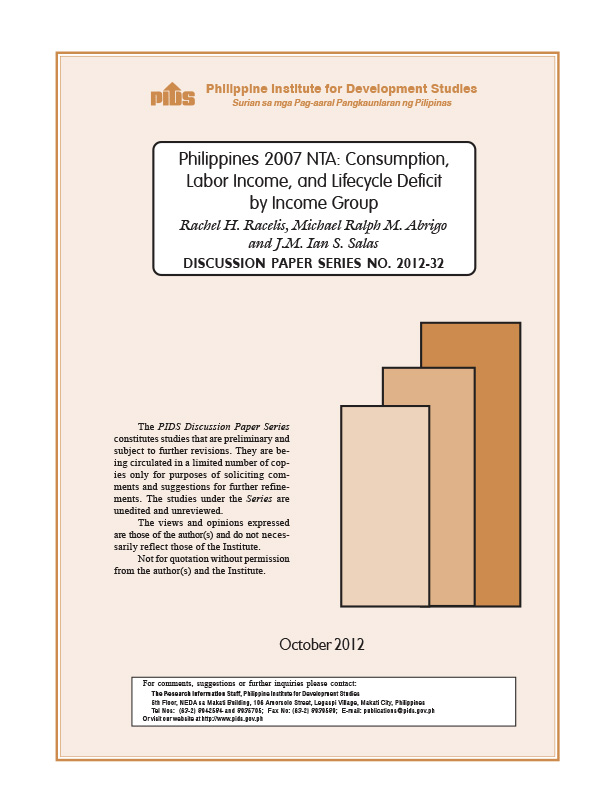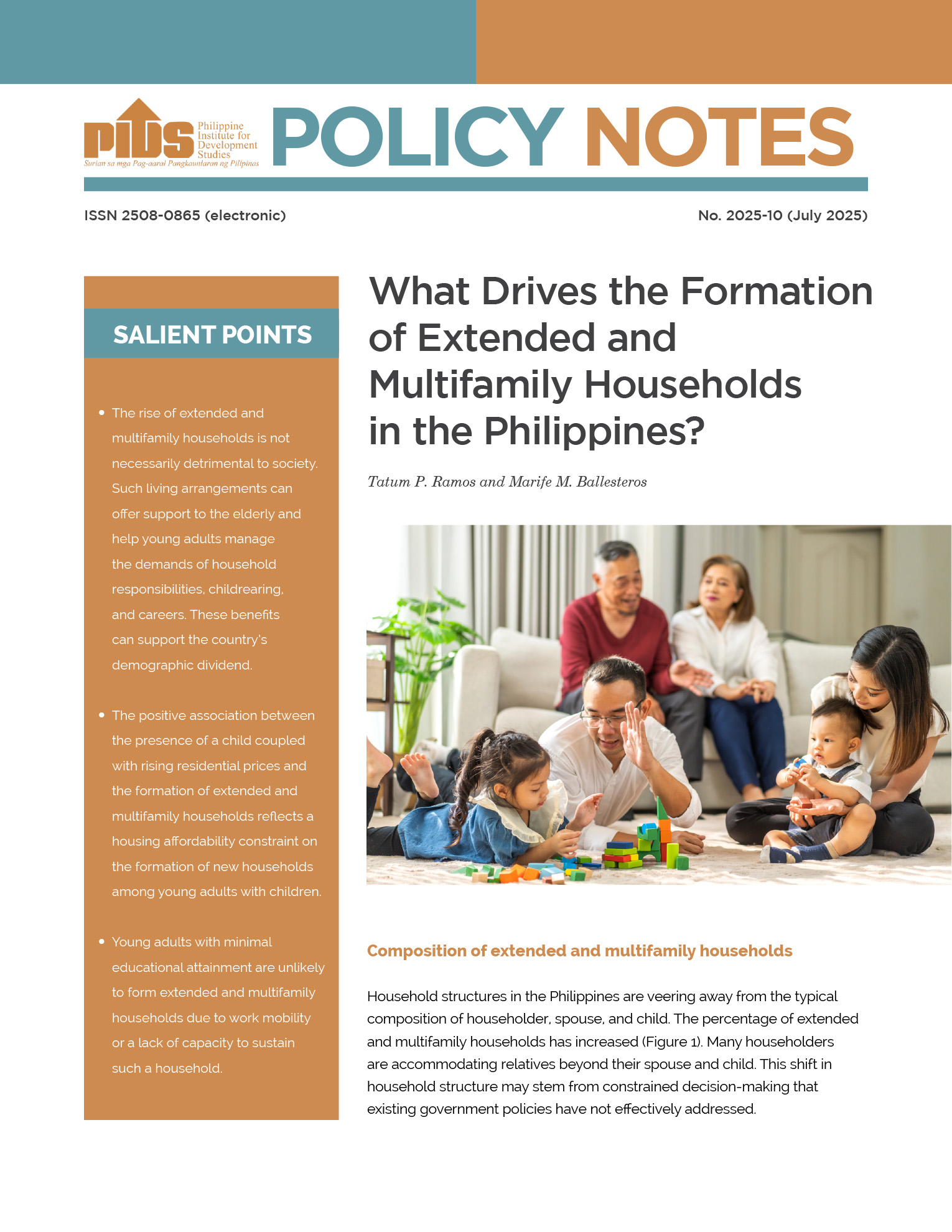The NTA flow accounts for the Philippines for the year 2007 include not only national level estimates but also estimates by income group. Three income groups are defined, referred to as income terciles. This paper compares age profiles of consumption and labor income across income groups. The age profiles were generally found to have the expected shapes but the profiles also showed the progressively lower per capita consumption and labor income at each age as one moves from the top tercile and on to the middle and bottom terciles.
Other key findings include: (1) the young incur lifecycle deficit longer in the bottom tercile (age 30 years) compared to the middle and top terciles (ages 26 and 24 years, respectively); (2) the elderly incur lifecycle deficit earlier in the bottom tercile (age 53 years) compared to the middle and top terciles (ages 56 and 59 years, respectively); (3) the young deficit age groups account for 66, 57, and 42 percent of aggregate consumption in the bottom, middle, and top income terciles, respectively; (4) the spans of the surplus ages are shorter for the bottom and middle terciles (22 and 29 years, respectively) compared to that for the top tercile (34 years); (5) the elderly deficit age groups account for 8, 9, and 11 percent of aggregate consumption in the bottom, middle, and top income terciles, respectively; (6) the ratio of the surplus generated by the working age group to the total lifecycle deficits of the dependent populations were computed to be 9, 22, and 41 percent for the bottom, middle, and top income terciles, respectively.
Citations
This publication has been cited 2 times
- Racelis, Rachel H. et. al. 2016. Consumption, labor income, and lifecycle deficit by urban-rural residence and by income group: Philippines NTA 1991, 1999, and 2011. Discussion Papers DP 2016-31. Philippine Institute for Development Studies.
- Salas, J.M. Ian S. et. al. 2012. Implications of Philippine trends in education financing and projected change in school-age population on education expenditures by income group: Using national transfer accounts results. Discussion Papers DP 2012-34. Philippine Institute for Development Studies.













